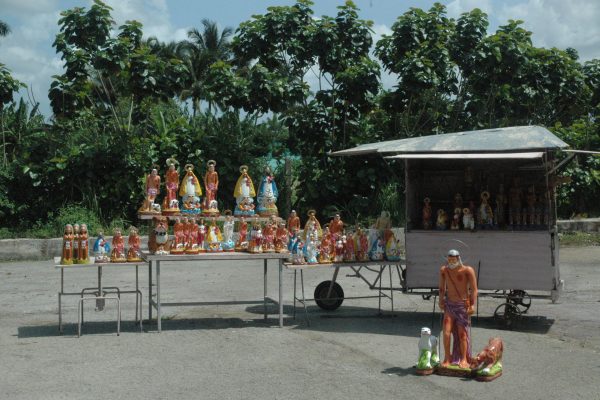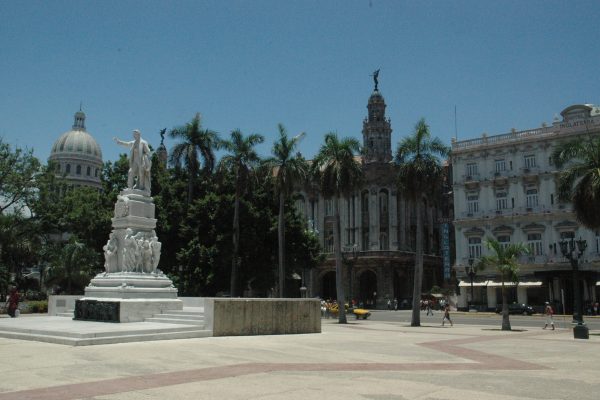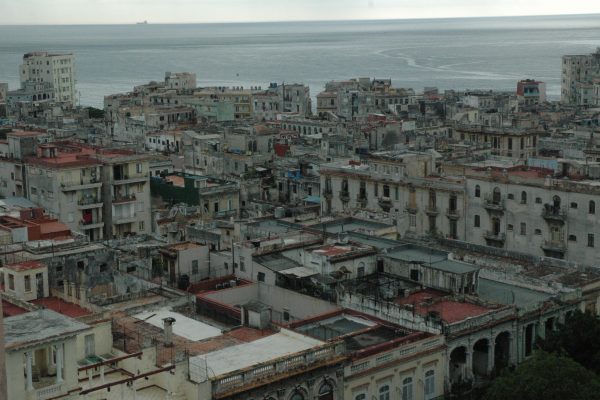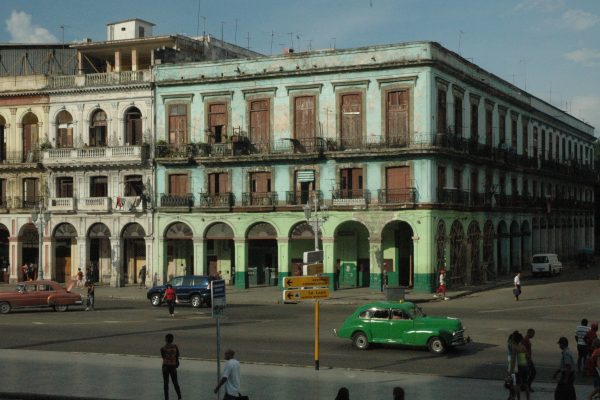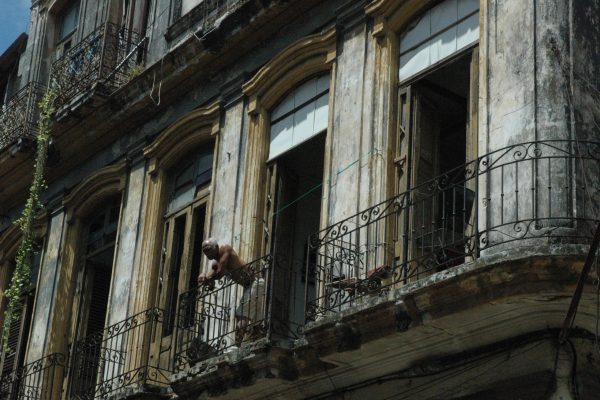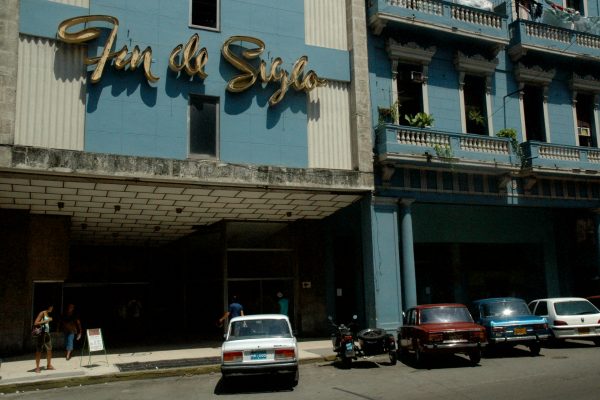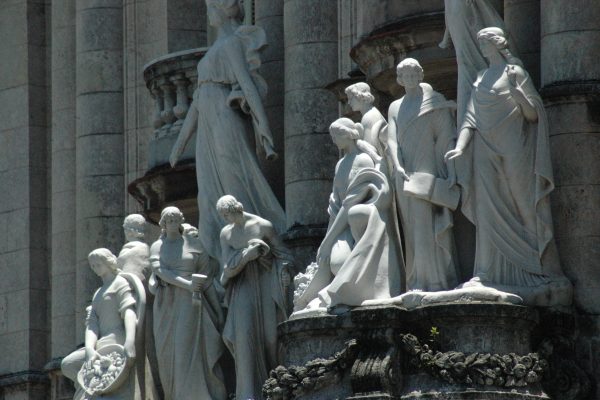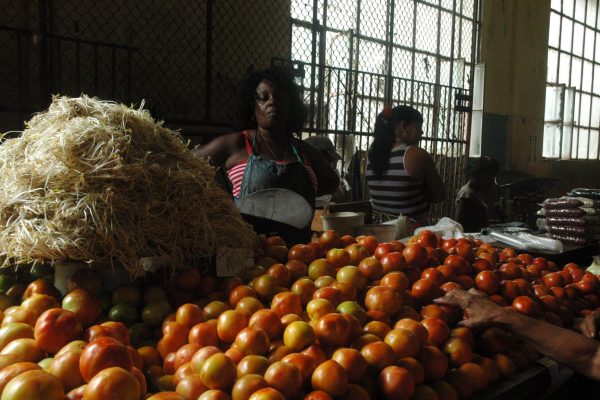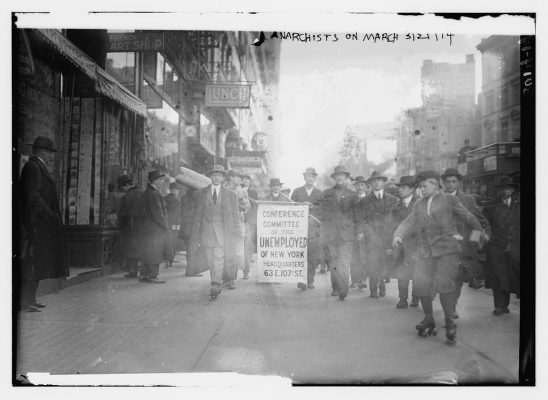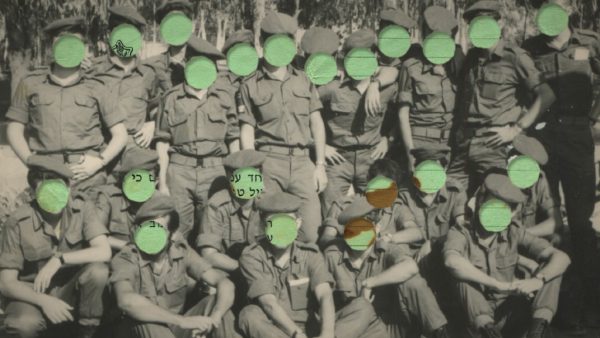Beneath the rain, beneath the smell, beneath all that is a reality
a people makes and unmakes itself leaving testimonies.
Virgilio Piñera
It is always raining when I land in Havana. This time, as we taxied across the sleek, empty runway towards the tarmac I watched the serrated tops of royal palms materialise through the mist, felt humidity rising from the dank red soil. We trundled past a row of hangars: an elephant’s graveyard for a decommissioned Cubana fleet, a Soviet MiG and a passenger plane with a coat of pale moss enveloping its flank. I recalled my surprise when, arriving from Bogotá in 2013, we’d pulled in next to a tiny private jet glistening in the rain, an emissary from another world. There was a Venezuelan flag on the tailfin which made me think of President Hugo Chávez, then undergoing cancer treatment in Cuba: later I heard it had brought his daughters to the island, come to take him home, where he was to die a couple of weeks later.
¶ In 2010, while living in Havana, I visited my friend Silvio who’d gone to Caracas on a ‘mission’ for six months as part of a bilateral deal between the Cuban and Venezuelan governments. Missions were integral to the generous internationalism of the Cuban revolutionary project, but some betokened necessity. In exchange for cheap oil, Cuba would provide doctors and military personnel to train their Venezuelan counterparts. As a representative of the smaller, cultural, cadre, Silvio’s duty was to play music up in the cerros – the hillside slums surrounding the capital – for which he’d earn 700 dollars a month (the Cuban government retained the rest of his wages). Silvio had little desire to be there – his first trip abroad, he’d left his wife and children in Havana – but as the average monthly wage in Cuba was 25 dollars, this was a chance to earn serious money. All the Cubans were put up downtown at the Hotel Alba – once the Caracas Hilton, until Chávez nationalised it. Silvio’s roommate was away, in the provinces on a literacy campaign, so -warning me not to speak – he was willing to sneak me past the elevator guard and up to the seventh floor.
Since all the artists and teachers were staying on this level, I’d imagined things would be lively. Instead, homesick and trying not to spend any money, terrified by the sound of nightly gunfire from the streets below, most of the Cubans kept to their rooms, mesmerised by the unparalleled extravaganza of cable television. Struck down by a severe bout of consumeritis (having never seen cheap, ‘fashionable’ clothing before) the man in the room next to us passed most of the night crying, having splurged an entire month’s wages on coloured T-shirts and shorts; he didn’t know what to tell his family, who were waiting for a remittance. Standing by the window, I looked down at the brutalist Teatro Teresa Carreño: the armoured motorcade in the forecourt, fifty bodyguards loitering – in red berets – waiting for Chávez to come out of a performance of la Traviata. Silvio and I talked, listening to plangent 1930s boleros from Sancti Spíritus. He was angry that he’d have to parade, all dressed up, for the upcoming Cuban National Day, with the added humiliation of having to lead a rendition of the patriotic anthem ‘Saberse Cubano’. As he spoke, he lovingly tended to a statuette of Elegguá – an Orisha deity of the syncretic Cuban religion of Santería – enshrined in a makeshift grotto assembled in the wardrobe, encircled by ex-votos: candles, cups of rum, glass beads, a packet of biscuits with my name written on it.
¶ I was in Cuba during September of 2016, keen to see the changes underway since President Obama announced a normalisation of relations between the two countries, and to witness the progress of more gradual developments unfolding since President Raúl Castro took over from his brother Fidel in 2008. Limited foreign investment had been legalised, and in 2010 a regulated cuentapropismo: self-employment in the fledgling private sector. By 2011 Cubans were granted permission to buy and sell their homes and cars, and to travel abroad. On my flight I’d sat next to a couple who’d been to visit their grandchildren in Madrid. When I asked the man – he wore a black leather Stetson throughout the journey – how it felt to be able to travel freely, he smirked, shrugging, ‘Se ha cambiado el collar…’ and, when I pressed him to explain, expanded, ‘They’ve changed the collar, but it’s the same dog. Few people can afford passports, and those who can, who don’t have a good enough reason, like family to visit, never get a visa. Russia and Mongolia are the only two countries that grant Cubans visa-free entry… Bah!’ He made a retching motion into the remains of his in-flight meal, grinning again.
*
Inside José Martí Airport they’d removed some of the more tedious bureaucracies, including Communist-style locking security booths, but with two flights coming in at once the concourse was jammed with irritable travellers, the customs officials overwhelmed. I waited over an hour by the carousel, sweating, with little else to do but observe a retinue of mosquitoes that rose and fell from the offloaded bags at anyone’s approach. Posters for Polish vodka, yogurt from the Philippines and low-cost Swiss watches – the incongruous vanguard of foreign advertising – clung limply to the walls; the peppery smell of cigars lingered in the air and, somewhere, a handheld radio transmitted the faint crescendos of a baseball match. Soon the airport, unchanged since the Revolution, is due to be renovated and expanded by a French company. Two weeks prior to my arrival the first regularly scheduled service between Cuba and the United States in fifty years had resumed, but many flights to the capital had to land elsewhere. I met some intrepid ‘legal’ tourists, including a young couple from New York who’d booked a weekender as soon as the law was changed: with a stop-over in Fort Lauderdale to buy tourist cards it was only a 45-minute, $100 flight on to Santa Clara then four hours to Havana by coach. Americans still had to adhere to one of the twelve loosely worded requisites in order to travel legitimately to Cuba. These included a desire to express ‘Support for the Cuban People’ or to engage in ‘Journalistic Activity’. Megan, who worked for a social media start-up, had claimed she planned to blog about her visit for Humans of New York. In May 2016 the first cruise ship arrived from Florida, ninety miles north of Havana, and several regular services were due to recommence from Miami and Tampa by mid-2017.
*
I was woken by the boom of a gun-salute from the cannons of La Cabaña – the eighteenth-century fortress complex at the entrance to Havana harbour – to mark the official visit of the BAP Unión, a four-mast 99-metre Peruvian frigate and the largest sailing vessel in Latin America. I was on the fifth floor of one of the taller buildings in Centro Havana. The shutters were open but no breeze came in off the sea; it was already stifling and traffic fumes rose from the street below along with cries from fruit vendors pushing hand-carts. Over a cup of sweet black coffee, I flipped through the main State newspaper, Granma. Headline news was an analysis of recent rainfall and the announcement of the opening of the Non-Aligned Summit in Venezuela: across the inner pages were the transcript of a speech made at the UN by a Cuban minister (a jeremiad against the US trade embargo) and a disquisition on the deficit in the national avocado harvest. I stepped into a cold shower. No sooner was I in there than the building started to rumble, the casements shook and, rushing out onto my balcony, I watched in amazement as a yellow and blue Soviet Antonov An-2 – a 1940s biplane, like the crop-duster that divebombs Cary Grant in North By Northwest, but twice the size – propelled itself through the corridor separating my block from the sheer wall of the Casa de la Música opposite. It looped back and forth a few times, in widening arcs over the rooftops, fumigating for zika virus.
Later, walking to the Old Town to change money, I crossed the tree-lined Paseo del Prado, named for its counterpart in Madrid but more reminiscent of Barcelona’s Las Ramblas. In May 2016 Chanel had taken over the Prado for the launch of Karl Lagerfeld’s ‘Cuba — Cruise’ collection with forty-five models sporting black berets, in homage to Che Guevara. Vintage cars growled where horse-drawn carriages used to parade each evening; seven hundred invited guests looked on as Brazilian supermodel Gisele Bündchen catwalked down the floodlit central promenade. A Cuban friend who lives on the Prado complained to me that the whole area had been cordoned off during the show and neighbours of hers had charged up to $100 for a balcony view. When she asked the police why men were positioned on the roofs of adjacent buildings, she was informed that this was a necessary security measure ‘in case anybody decided to throw stones’. In February 2016 the Dead Daisies became the first US rock band to play Cuba since the loosening of restrictions. The following month – in a country where their music was prohibited – the Rolling Stones staged a free concert at the city’s Cuidad Deportiva stadium for a crowd of over 700,000.
I lingered in Parque Central, at the top of the Prado, as a drill of Peruvian cadets from the Unión stood to attention in front of the memorial to José Martí-Cuba’s national hero – and their captain laid a wreath at his feet. In March 1949, when three drunk US marines on shore-leave clambered up onto this statue and urinated on it, a young lawyer called Fidel Castro led a protest to the US embassy: this presaged his first significant appearance in the press. Less than two months after my visit, Fidel was dead; his ashes now lie next to those of Martí at Santiago’s Santa Ifigenia cemetery in the east of the island. I passed the Manzana de Gómez, a well-known landmark, and once the country’s principal shopping centre. It had lain vacant since the 1960s and was being developed by a Swiss chain into a boutique hotel and luxury mall. The surrounds of the upper windows facing the park, pockmarked by bul- let holes-for half a century reminders of a shoot-out between rebel militias and pro-government gangs in the early hours of 1 January 1959 — had been filled in. Years ago, I ducked under the iron grille at one of the block’s ground-floor corners, already prised open by those who used to sleep on cardboard matting inside, and wandered along its dust-clagged diagonal passageway past the empty shopfronts and the poorly-sculpted Byronic bust of Julio Antonio Mella, founder of the Cuban Communist Party. The wealth disparity engendered by recent hotel developments, coupled with the sudden influx of US tourists, is rapidly changing the material and social makeup of the country. Foreigners (illegally: through Cuban friends) are already purchasing real estate. It’s difficult to see how the government can keep other, more lucrative, business interests in check, and with all this new money around corruption levels, currently low, will undoubtedly rise.
I looked over to the other side of the park at the lavish neo-baroque façade of the Palacio del Centro Gallego – today the Gran Teatro – where Obama delivered his historic speech in March 2016, the first sitting US president to visit the island since 1928 (two years after Fidel Castro was born). Following rounds of secret talks, first in Canada and later brokered by the Vatican, that began three months after the death of Hugo Chávez, Obama and Raúl Castro chose to announce the plan to restore diplomatic relations on 17 December 2014, the Day of San Lázaro, who is widely venerated in Cuba as patron saint of the poor and of the sick. The hope and confidence in the statuary – winged victories, unassailable muses – adorning the Gran Teatro’s various niches and plinths was still apparent, even if they seemed denuded by the vicious cleaning administered before the American president’s visit, self-conscious under the glare of the new megawatt lamps at their feet.
Later, doubling back through the plaza, I passed down the side of the theatre, on San Rafael. Famed for its lavish shops in the 1950s, apogee of the dictator Fulgencio Batista’s consumer-driven island fantasia, the street is now populated by government cantinas hawking emparedados, frituras or refrescos. Among these a Puma outlet and a black-and-white Adidas frontage had made a tentative return, selling imported goods which no one on a Cuban wage could afford. Approaching the intersection with Galiano I stood under the cracked walls of the Fin de Siglo department store, its expanse of windowless sky-blue upper storeys like an upended swimming pool. Towards the park opposite, leaning on bicycles or seated on the green benches under the alamo and ficus trees, people were communing with the outside world on their smartphones, headphones in, holding them aloft on Skype, WhatsApp, Imo or hun- kered over flicking through Facebook. Cubans had been allowed mobile phones since 2008, Raúl’s first year in power, but this was the first time I’d witnessed Wi-Fi de contén, sidewalk internet (named for where you sit to use it): a network of sanctioned hotspots rolled out by the government from the summer of 2014. Parque Fe stands on the site of El Encanto, Latin America’s premier shopping emporium until 1961 when it was burnt to the ground in an anti-Castro arson attack. Sergio, the alienated bourgeois in Tomás Gutiérrez Alea’s film Memories of Underdevelopment, laments the store’s destruction as he loses hold on his old way of life: ‘After El Encanto burnt down the city isn’t the same. Havana now seems like a provincial city…no longer the Paris of the Caribbean, as all the tourists and whores used to say.’ The park was once a liminal place, each bench the unofficial property of one of the down-and-outs who’d frequent the former Ten Cents café on the corner; these were the ‘decrepits (or those heading for decrepitude)’ memorably described by the poet Reina María Rodríguez in her Sebaldian Variedades de Galliano, who’d queue daily to buy anything from shoes, cakes, bread, and plumbing supplies there in moneda nacional. Parque Fe has changed beyond recognition, its former habitués nowhere to be found.
Through a doorway in the Old Town I glimpsed an intricately constructed collage of portraits of Fidel, some hand-painted, others cut out from magazines and newspapers – one for each of the ninety years he’d attained the month before. Before his death it wasn’t common to find images of him like this, in line with Fidel’s discouragement of cult of personality. At first this seemed a spontaneous and even touching bricolage in honour of the líder máximo, although while out of town in the next days I noted an identical collage in every municipal building, under the words ‘Gracias por existir, Comandante’ – ‘Thank you for existing, Comandante’. Yet in over fifteen years travelling to Cuba I had never heard so many denounce Fidel personally, openly and by name, without restraint and in public. Some of this came from strangers — street vendors, taxi drivers — not people who knew and were comfortable with me; and most criticisms weren’t laid on for the benefit of a foreigner, as was often the case — they were overheard in bars, markets or collective transport. When I first came to the island the ‘F-word’ was unmentionable outside of the home, a euphemistic stroking of the chin (to signify a beard) would suffice. Later in the week, cooling off in a palm- thatched café at Santa María del Mar, I surveyed a scene in which three drunks sat in the bar nursing plastic cups of rotgut rum, studiously ignoring two listless prostitutes who anyway were on the lookout for tourists. A family of Miami Cubans, flaunting their dollars, had before them a table stacked with uneaten remains from the entire (scant) menu, and a bottle of Havana Club añejo. Raúl Castro appeared on the television suspended above the bar, beginning his speech at the Non-Aligned Summit. A barman in a white guayabera immediately swung about and cranked up the reggaetón music, turning with a rueful smile and his palms raised in interrogation. A barfly slapped the counter repeatedly with his hand, tongue lolling between his teeth and creases forming around his watery eyes; one of the girls blew an elaborate kiss towards the bartender, who made as if to catch it.
¶ One of the first things I used to do on arriving in Cuba was to call around a few friends to see if there were any shows or exhibitions on. As the island was mostly analogue, with phone-calls between landlines subsidised, the bush telegraph of la bola – the word on the street – was still the most effective way of getting up to speed and hearing news. So it was that I learnt of Polish Film Week, and the next morning headed over to the newly-opened Ateneo on the Prado (one of the first independent cultural institutions) to hear a talk by the director Lech Majewski and watch a short screening of field of dogs. There were various art-house films to see during my visit, and theatres across town were staging adaptations of work by Zbigniew Herbert and Witold Gombrowicz. This was typical of the vibrancy of the arts in Havana, upshot of a society that has for decades benefited from an exemplary public education system. The same evening, off for a drink down towards the port, I found a group of fifty young Cubans gathered outside the Hotel Ambos Mundos, where Hemingway lived in the 1930s and began For Whom The Bell Tolls. It was another Wi-Fi zone, not a designated one like the park, but an unofficial ‘pop-up’ clandestinely convened to harness the hotel’s bandwidth for a few hours. Presumably the hotel staff were complicit in the scheme, turning a blind eye and receiving kick-backs. No one outside spoke to one another, or seemed concerned that a policeman was hovering nearby; a young man, coming over to sell me a log-in code, confided that they’d be meeting the next night at the same time in front of another hotel down the road.
Cuba had the lowest connectivity rate in the western hemisphere, one of the lowest in the world. All internet was run by ETECSA, the State telecoms company. Official figures suggested that just 5 per cent of homes were linked up to the web. Supposedly 25 per cent of the population had intermittent internet access, but this was hard to believe. And such figures included the antiquated internal intranet service – intended for doctors, academics and other authorised individuals – which was run through dial-up and provided controlled usage of services such as a national email network, certain educational materials and journals. Many Cubans resorted to el paquete, a non-virtual (unofficial, but tolerated) package of files, films, TV shows and offline webpages such as Wikipedia, restocked and delivered by hand every week on USB sticks through a mysterious network of fixers, considered to be as vital to daily sustenance as the libreta, the State ration card for basic alimentary goods.
In the summer of 2014 the government announced that it would allow Wi-Fi hotspots in designated plazas and parks throughout the country. These could only be accessed through the purchase of an ETECSA internet service card, valid for one hour at the price of $4.50 (in 2016 this was dropped to $2, and in the last days of the year to $1.50). Such an amount was no small concern: by 2017, the mean monthly wage had still not risen above $30. What’s more, connection was painfully slow and internet cards weren’t always easy to find. By the close of 2016 there were forty Wi-Fi hotspots in Havana, a city of over two million people. House prices around internet points shot up immediately; the character of public spaces was transformed within days as tech-savvy, wealthier locals migrated towards them from across the city. Many blamed the island’s access issues solely on the punitive, and ineffectual, trade embargo imposed by the United States in the 1960s; others claimed that the retention of a limited internet played to the government’s interests of centralised control and monopoly over public information. There was general excitement in 2011 over the possibilities afforded by the arrival, from Venezuela, of the island’s first broadband cable. But I saw friends’ exasperation grow as years passed with no further announcement or improvement in services. The cable was finally activated in 2013, but then only to connect government buildings, embassies and foreign companies. In 2015 broadband was granted to Cuban doctors and politicians, but no more. ETECSA has made repeated statements about plans for widespread, affordable, ADSL home connections, but little seems to happen, leading some to view this diversionary tactic as a ploy to quell mounting public dissatisfaction. Lack of access to information on the island, generally – its inaccurate or contradictory nature, the unaccountability of public institutions – drives people to despair. With irony, Cubans are fond of quoting a ‘reassurance’ placed by ETECSA in Granma, where developments in connectivity were described as advancing ‘sin prisa, pero sin pausa’ – ‘slowly, but surely’.
Outside the Hotel Ambos Mundos, and later in the plazas of provincial towns such as Sancti Spíritus and Remedios, I had noticed touts offering a connection for $1.50 (when cards could only be purchased for $2 in stores), or even $1. I found that some individuals were hotspotting their smartphones to make a little profit – the benefit for the client, who had to suffer a lower speed, being the price and convenience of not having to queue to buy a card from an ETECSA outlet. Only a certain number of cards were released to stores by the government each day. And there were documented cases of ETECSA employees withholding stock-claiming they’d sold out-then selling the whole pile to street touts for $2.50 each, who subsequently palmed them off to punters for $3. Once, I’d even seen someone turn up with their own router, place it on the pavement and start charging passers-by for access. A powerful router could be bought for $200, and picked up a signal from a few miles away-this was one way Cubans got online at home, inviting a group of friends round when they purchased a card so they could all share the hour. And there were still more illegal methods to get online, of course. Even though it was punishable with a prison term, resident foreigners – and locals who could afford it – arranged satellite connection. This could cost between $150 and $200 a month, giving around 200MB of data a day (two to three hours of browsing) and anywhere between $250 and $800 to install. Often foreign diplomats had such set-ups in their homes, concealing the antennae in water tanks on the roof. Satellite connection had to be paid for with a credit card registered in the US or another country, but was unreliable given that an account would usually be sublet to others, without the client’s knowledge, handicapping the speed.
¶ In the days prior to Obama and Raúl Castro’s joint statement, the EU had restored full relations with Cuba. By the end of 2016 it was a de facto open season for investors. During my twelve-day visit that September, newspapers announced state visits by the premier of Quebec, the presidents of Mongolia and Iran, and a bilateral trade agreement with the Czech Republic. On my last morning, Shinzo Abe became the first Japanese prime minister to visit the country and that afternoon, trying to access Wi-Fi in the lobby of the reopened Hotel Capri – built originally by the American mobster Santo Trafficante Jr., frequented in those early days by the likes of Meyer Lansky and Lucky Luciano-I talked to a group of Chinese journalists from Shenzhou who were attempting, over the feeble connection, to send video content back home. They had been preparing a programme to mark Li Keqiang’s upcoming tour, the first Chinese premier ever to visit. China is Cuba’s second biggest trading partner after Venezuela. In 2016 oil supplies from Venezuela shrank by as much as 40 per cent, and Cuba had entered a negative growth rate by the end of the year. Spain and Brazil had taken over a large stake in the tourism industry, and China a tranche from infrastructure and technology. I read that Mexico’s Telcel had just extended its roaming service to the island, and met a Spanish technician from Ericsson tasked with wresting back some of the telecommunications market from the Chinese conglomerate Huawei. In April 2017, 3G became functional in Havana, and Google installed the first ever foreign internet servers.
By 2016 60 per cent of Cuban food was imported, and half the island lay uncultivated due to the failures of collective farming. To encourage productivity, producers were now allowed to keep some of their surplus crop. Around the country up to 30 per cent of Cubans were self-employed, adjusting-often with understandable consterna- tion-to the new concept of paying taxes. For years Havana’s lavish Capitol building, modelled on that in Washington DC (and thirteen feet taller, it is said), was closed for restoration, but it recently had become home once again to the Asamblea Nacional del Poder Popular, the National People’s Assembly. Money-funds originally ringfenced, allegedly, for the much-needed restoration of the Old Town-had been diverted to revamp the Capitol; many Cubans bitterly drew parallels with the 1920s when the dictator Gerardo Machado expended a third of the country’s budget on completing the same building. In any case, I was repeatedly told, the real power was wielded from the Ministerio de las Fuerzas Armadas, the military’s headquarters on the Plaza de la Revolución. A local partner was still needed for any foreign investment, and most concessions could only be granted by a powerful army holding company – estimated to control 50 per cent of the country’s economy – run by General Luis Alberto Rodríguez, Raúl Castro’s former son-in-law. Raúl served as head of the armed forces from 1959-2008, until he became president and commander-in-chief; the army’s increasing domination of the business sector caused widespread resentment among civilians. Raúl, who is 86, has pledged to step down in 2018 (bringing to an end fifty years of Castroism) and there is wide speculation as to who will succeed him. In June 2017 President Trump, delving deep into the fruit salad think-tank of his mind, announced that he would roll-back many of the policy changes instigated by the previous US administration.
¶ The heavily fortified Castillo de la Real Fuerza, the oldest inhabited building in the New World, guards the entrance to Havana’s harbour. A slender stone belfry rises high above it, crowned by a bronze weathervane in the form of a woman. ‘La Giraldilla’, much loved by habaneros, is an emblem of the city and supposedly represents Doña Isabel de Bobadilla, wife of the conquistador Hernando de Soto, Cuba’s governor in the 1500s. He left Isabel in command when he departed in search of the Fountain of Eternal Youth and the Seven Cities of Cíbola, towns of legend whose very walls were fashioned from pure gold. Her hand on her hip, La Giraldilla cranes out over the Strait of Florida awaiting his return, not realising her husband had succumbed to fever on the banks of a giant river he’d ‘discovered’: the Mississippi. Cuba too is waiting, turning this way and that in the wind, yearning; but for what – in a country cut off from the world for sixty years – it is not clear. When whatever it is arrives, however, it’s likely to disappoint. The general malaise, this unknowing and stasis that pervades the country right now, is impossible to categorise, and as such risks being mostly forgotten, in time. It may be superseded by a local version of Ostalgie – ‘Castralgia’, let’s say – a longing for the good old days when things were better, less materialistic, simpler. What Cuba will always have to fall back on, which cannot be taken away or debased, is that period in which this small island nation determined the path of her history, against all odds, becoming thereby an example to an entire continent and the world. But that due pride is troubled by the spectre of new dependencies. The question might not be where now for the Cuban Revolution, but whether its wellspring ran dry some time ago, decades before the demise of Castroism.
Out to visit the Castillo de Atarés – the husk of a Spanish fort that commands the south-west corner of the harbour – I passed the Cuatro Caminos market, an early twentieth-century building under renovation and covered in scaffolding. Always one of my favourite points of call, it used to be the largest food outlet on the island. The market has been sold to the Chinese, and is due to reopen in 2019 for the city’s 500th anniversary. Arriving at the harbourfront I slipped through the wire fence under the fort and climbed the hill. From the 1700s to well into the twentieth century, Atarés was a notorious place of torture and execution. Workmen stood on the roof above the draw-bridged gateway pouring cement into cracks, which dripped through into a bucket; others were digging out the former barracks inside; saplings grew in the moat and sprouted from the ruined coral-stone walls. I looked out from its battlements over the empty harbour, the brackish expanse where once the colonial plate fleet – low in the water, laden with loot plundered from the open veins of the Spanish Main – would lie up to provision with cured meat before turning home for Cádiz. Between the disarticulated jetties, wasted wharves, sheds and warehouses lagged the memory of galleons limping home into the shipyards after skirmishing with corsairs; on the horizon, a plume of fire flickered and smoked from the chimney of the oil refinery. To my left rose the shell of the Tallapiedra thermoelectric plant – the size of London’s Battersea power station – deserted since the 1960s. One of the men whistled for me to come down, out in front of the gate, beckoning conspiratorially and gesturing with dusty hands. He led me to a small clearing among the ponciana scrub and motioned towards a jumble of discarded bones, caked in soil, one of which was clearly a human femur.
